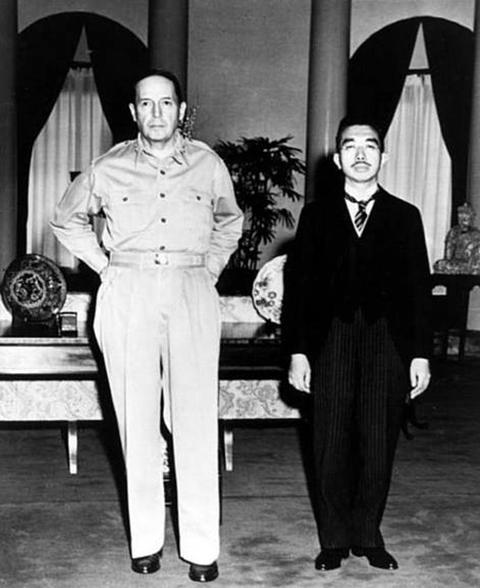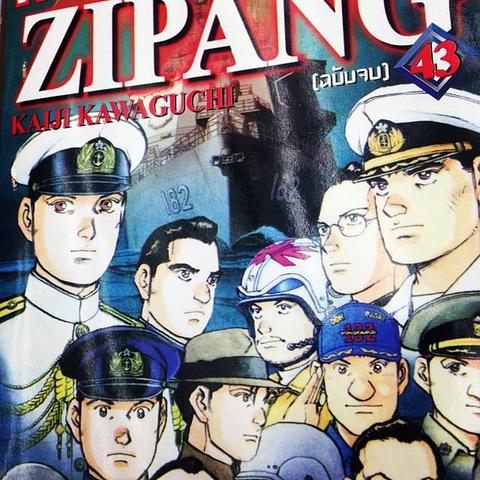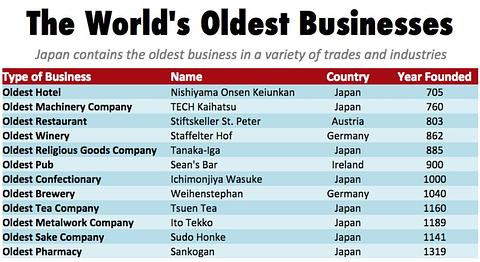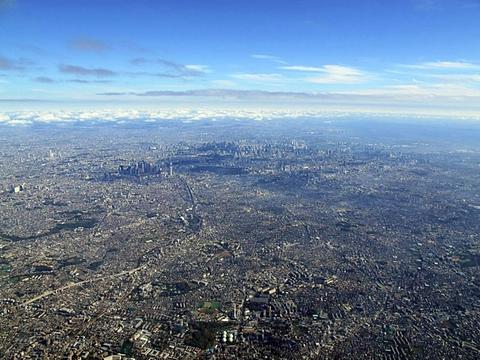My thinking about Japan
During the modernization after Meiji restoration, the government decided to use Ginza as a model. An introduction of tramp caused a conflict with old style carriage owner (rickshaw man). This reminds me a problem of building high speed rail in Thailand recently. Ginza "Bricktown" late 1870s-1880s.
(A) The Failed attempt coup d'état & Riots
- Rice riots of 1918 https://en.wikipedia.org/wiki/Rice_riots_of_1918
- February 26 Incident (26 February 1936) https://en.wikipedia.org/wiki/February_26_Incident
- Kyūjō incident (the night of 14–15 August 1945, just before the announcement of Japan's surrender to the Allies) https://en.wikipedia.org/wiki/Kyūjō_incident
(1) The true emperor
รูปนี้เป็นรูปถ่ายคู่ของ จอมพลดักกลาส แมคอาเธอร์ ผู้ทิ้งวจีอันเป็นประวัติศาสตร์อย่างน้อยสองครั้ง "ข้าพเจ้าจะกลับมา" (I Shall Return) และ "ทหารเก่าไม่มีวันตาย" (Old Soldiers Never Die) ถ่ายคู่กับ จักรพรรดิ์ฮิโระฮิโตะ ของญี่ปุ่น เมื่อคราวญี่ปุ่นถูกยึดครองใต้กองกำลังสัมพันธมิตรหลังแพ้สงครามโลก
ในขณะนั้นแมคอาเธอร์ดำรงตำแหน่ง ผู้บัญชาการกองกำลังสหรัฐฯ ในตะวันออกไกล และเป็นผู้บังคับการสูงสุดในการ "ยึดครอง" ญี่ปุ่น ของกองกำลังสัมพันธมิตร ในแง่หนึ่งเขาคือ "จักรพรรดิ" แห่งญี่ปุ่นตัวจริง
ในภาพยนตร์เรื่อง "Emperor" ภารกิจหนึ่งของแมคอาเธอร์ คือการค้นหาหลักฐานว่า จักรพรรดิฮิโระฮิโตะ ทรงเกี่ยวข้องกับ "สงครามรุกรานจีน" ของญี่ปุ่นหรือไม่ จุดหมายในเชิงยุทธศาสตร์ของแมคอาเธอร์คือ การเปลี่ยนแปลงญี่ปุ่นให้พ้นอิทธิพลชนชั้นนำเดิมอย่างสิ้นเชิง หรือจะประนีประนอมกับชนชั้นนำเดิมญี่ปุ่น แล้วอาศัยคนเหล่านี้เป็นเครื่องมือในการต่อสู้กับอิทธิพลคอมมิวนิสต์ซึ่งกำลังทวีกำลังแข็งกล้าขึ้นทุกขณะหลังสงครามโลกครั้งที่สอง หากตัดสินใจอย่างแรก แน่ใจได้ว่าอเมริกาจะเปลี่ยนญี่ปุ่นให้พ้นจากวิธีคิดแบบจารีตและระบอบเผด็จการทหาร แต่ก็จะเสี่ยงกับความวุ่นวายและการนองเลือด แต่ทางที่สองความเสี่ยงและผลที่ได้รับจะกลับกัน
ในหนังเรื่องนี้ พลจัตวา บอนเนอร์ เฟลลาร์ ซึ่งทำหน้าที่เป็นผู้ช่วยของแมคอาเธอร์ จะต้องค้นหาหลักฐานว่า ฮิโระฮิโตะ เกี่ยวข้องหรือไม่กับสงคราม
เฟลลาร์พบว่าเรื่องมันไม่ได้ชัดเจน ขาว-ดำ ขนาดนั้น สถานการณ์ชี้ไปในทางที่ว่ามีเครือข่ายราชสำนักที่สับสนซับซ้อนรายล้อม ฮิโระฮิโตะ และยากจะบอกได้ว่าใครเป็นผู้ใช้อำนาจตัวจริง
ในญี่ปุ่นมีศัพท์คำว่า "ฮอนเนะ" (本音) ซึ่งหมายถึง "ตัวตนที่แท้จริง" และ "ทาเทมาเอ" (建前) ซึ่งหมายถึงฉากหน้า (façade) ที่แสดงออก (ตอนผมทำโครงการที่ไปทัศนศึกษาที่ญี่ปุ่น เจ้าหน้าที่ขับรถโค้ชคนญี่ปุ่น ต่อหน้าเขาดูเป็นคนเคร่งครัดระเบียบวินัย เคร่งขรึม และสงวนท่าที แต่เขาพยายามส่ง message ทางโทรศัพท์มือถือ "เกี้ยว/ขอแต่งงาน" ไกด์ทัวร์สาวชาวไทย ตลอดการเดินทางในทริป) ทั้ง ฮอนเนะและทาเทมาเอ เป็น "อัตลักษณ์" ของญี่ปุ่น
นายพลญี่ปุ่นบอกเฟลลาร์ว่า ดูภายนอกญี่ปุ่นเป็นประเทศที่มีความทันสมัยมีวิทยาการที่ก้าวหน้า แต่ตัวตนที่แท้จริงของญี่ปุ่น คือจิตวิญญาณแห่งนักรบที่สืบทอดต่อเนื่องกันมานับพันปี
----
General Kajima: There are two Japanese words you should know. Tatemae, the way things appear. Honne, the way things really are. When you look at Japan, you see the most modern and westernised of Asian countries, but that is tatemae, the surface.
General Bonner Fellers: And honne?
General Kajima: It is the true heartbeat of my country, which is more than 2000 years old, it has nothing to do with the west. Japan runs on the ancient warrior code of loyalty and obedience.
----
เฟลลาร์ไม่สามารถหาหลักฐานยืนยันได้ว่าฮิโระฮิโตะเกี่ยวข้องกับสงครามหรือไม่ สิ่งที่เขาได้มีเพียงเรื่องเล่าว่า "จักรพรรดิทรงเอ่ยบทกวีโบราณเรียกร้องซึ่งสันติภาพ ขณะที่กองทัพจักรวรรดิญี่ปุ่นตัดสินใจบุกจีน" และ "จักรพรรดิทรงตัดสินใจเด็ดขาดที่จะยุติสงคราม และต้องเผชิญภยันตรายจากพวกขวาจัดที่จะรัฐประหารยึดอำนาจเพื่อสู้กับข้าศึกให้ถึงที่สุด"
ในความเป็นจริงมีสองบทความที่พูดถึงเหตุการณ์ในช่วงนี้
(1) อันที่จริงแล้วเฟลลาร์พยายามสร้างหนังเพื่อใช้ประชาสัมพันธ์ในเชิงจิตวิทยาให้พลเมืองญี่ปุ่นได้เห็นว่าอเมริกันสนับสนุนจักรพรรดิปกครองญี่ปุ่นต่อไป -- หนังเรื่อง Emperor ดูเหมือนจะพยายามสืบทอด spirit นั้น http://www.jaas.gr.jp/jjas/PDF/2014/03_Iguchi.pdf
(2) บทความในนิวยอร์คไทมส์ ระบุว่า ฮิโระฮิโตะ เป็นผู้ชักใยตัวจริงมาตลอด เขาไม่เคยเป็นหุ่นเชิดให้กับใคร (In fact, Hirohito was never a puppet. He failed to prevent his army from invading Manchuria in 1931, which caused Japan to withdraw from the League of Nations, but he sanctioned the full-scale invasion of China in 1937, which moved Japan into a state of total war. He exercised close control over the use of chemical weapons in China and sanctioned the attack on Pearl Harbor in 1941. Even after the war, when a new, American-modeled Constitution deprived him of sovereignty, he continued to meddle in politics.) http://www.japantimes.co.jp/news/2014/09/10/nation...
(2) Cherry Blossom
Symbols and their behavioral counterparts, rituals and ceremonies, are powerfully evocative, and they are often identified as the factors that move people to action. The Jacobins in the French Revolution, and Hitler, Mussolini, Mao, and many other political leaders have consciously deployed symbols and rituals for political purposes. Do they really move people, and are they more powerful than concepts, as not only Weber but “even” Durkheim proclaimed? Does the conscious, deliberate deployment of symbols and rituals, for the purpose of directing people to act, work as those deploying the symbols and rituals intend? Or do people ignore, intentionally or unintentionally, the “official meaning,” and/or assign meaning(s) different from the one(s) intended by the state?
-- Emiko Ohnuki-Tierney ,
Kamikaze, Cherry Blossoms, and Nationalisms: The Militarization of Aesthetics in Japanese History
(3) ตัวตนของญี่ปุ่นและความทรงพลังของวัฒนธรรม
ในบรรดาหนังทั้งหมดของผู้กำกับนามอุโฆษ, แ้ม้หนังเรื่องนี้จะไม่มีคนรู้จักเท่าเจ็ดเซียนซามูไร และราโชมอน แต่ว่ากันว่า "แรน" เป็นหนังที่ตกผลึกที่สุดของ ผู้กำกับนามอุโฆษชาวอาทิตย์อุทัย -- อากิระ คุโรซาว่า
นี่เป็นภาพยนตร์ที่สะท้อนถึงสัจธรรมของผู้นำ อารยธรรม และอำนาจ เมื่อขึ้นถึงจุดสูงสุดภูมิทัศน์ทางอำนาจดูสุขสงบร่มเย็นและน่าจะสามารถถ่ายทอดต่อไปให้กับทายาทได้ กลับล่มสลายลงอย่างน่าเอน็จอนาถใจ สายตาของผู้นำพร่ามัวยามคิดว่าคนใกล้ชิดที่ปากร้ายทว่าแฝงด้วยความจริงใจจำต้องกำจัดออกห่างตัว และหลงลมคนปากหวานคอยป้อยอเอาใจ
แรนได้รับอิทธิพลมาจากบทละครเรื่อง King Lear ของเช็คสเปียร์ บทละครเรื่องนี้สะท้อนโศกนาฏกรรมของมนุษย์อย่างไร "แรน" ก็สะท้อนชะตากรรมของมนุษย์ดุจเดียวกัน
ภาพของขุนพลร่วงหล่นลงจากม้าศึกในช่วงท้ายของภาพยนตร์ เป็นสัญลักษณ์ที่แทบไม่ต่างอะไรกับการร่วงลงผืนดินของโชคชะตาของมนุษย์ หากแต่ภาพยนตร์ทั้งเรื่องนี้ก็เป็นการประกาศถึงคุณภาพของญี่ปุ่นว่าอยู่ในระดับใด
คุโรซาว่ามีชีวิตอยู่ในช่วงบรรลุจุดสูงสุดของญี่ปุ่นในช่วงหลังสงครามโลก พลังทางเศรษฐกิจและเทคนิคการบริหารของญี่ปุ่นที่คุกคามจดหวิดอุตสาหกรรมยานยนตร์ของอเมริกันแทบล่มสลาย จนกระทั่งนักวิชาการด้านการบริหารต้องส่งคนเข้ามาศึกษาและถอดบทเรียนของญี่ปุ่นออกมาเป็นชิ้น ๆ จนได้ทฤษฎี Z (Z Theory) และระบบ Just in time จนทำให้มีการนำกลับไปปฏิวัติอุตสาหกรรมของอเมริกันเอง
แทบไม่ต่างกับเมื่อครั้งที่ญี่ปุ่นเคยส่งกองบินจากเรือบรรทุกเครื่องบินที่ำนำโดยฝูงบินซีโร่เข้าถล่มฐานทัพเรือที่อ่าวเพิร์ลของสหรัฐฯ ในช่วงสงครามโลกครั้งที่สอง เครื่องบินซีโร่เป็นหลักฐานทางวิศวกรรมชั้นสูงของญี่ปุ่นที่มีความเที่ยงตรงแม่นยำอย่างยิ่งยวดภายใต้ข้อจำกัดของเทคโนโลยีสมัยนั้นทำให้มันมีข้อได้เปรียบเหนือเครื่องบินของอเมริกา สหรัฐฯ ทำการวิเคราะห์ย้อนกลับทางวิศวกรรมกับเครื่องบินซีโร่และนำความรู้นั้นมาพัฒนาเป็นเครื่องบินรบที่เหนือกว่ากลับไปสู้ในช่วงปลายสงคราม
หลังจากคุโรซาว่าญี่ปุ่นก็ไม่มีผู้กำกับภาพยนตร์ที่โดดเด่นเท่านี้อีกเลย แต่ดูเหมือนพลวัตภายในของญี่ปุ่นที่เกิดจากความขัดแย้งของพลังภายในกำลังก่อตัว ค้นหาตัวตน และหาทางกลับมา เพื่อแผ่ผ่านทั้งอำนาจละมุนและอำนาจแข็งเพื่อเตรียมรับมือกับคู่มือที่เข้มแข็งที่สุดและกำลังอยู่ในยุคทะยานขึ้นอย่างจีน
อ่านการพูดถึงการแผ่ผ่านอำนาจละมุน และการควบคุม จากบทสัมภาษณ์ของ คุณสุภาพ หริมเทพาธิป บรรณาธิการ นิตยสาร BIOSCOPE (บทสัมภาษณ์นี้ตีพิมพ์ในหนังสือ Redefine Thailand) http://www.siamintelligence.com/suparp-interview/
(4) Japanese Zen and minimal art'
What is an enlightenment in "Eastern" world?
"Mu" or "emptiness" in Mushin refers to an empty mind in the sense that distractions, preoccupations, fears, worries, are absent and are no more an issue for the mind, whether in combat or in daily life.
The concept of Mushin is identical to the Japanese metaphorical expression "mizu no kokoro" or the "mind like water." This mental attitude refers to a mind that is in total harmony with the Cosmos that it resembles a still pond of water without any ripples where the surface reflects a clear and perfectly undistorted image of the surroundings, like a mirror.
Mushin cannot be grasped with the intellect; it must be experienced. A Mushin mind has no Ego and no substance; it is pure Enlightenment and is the perfect realization of the self.
The art of minimalist
like to think minimalism can be connected to:
- Letting go of attachment – to our possessions, because they don’t define who we are. Everything we own will one day be lost, stolen, broken, donated, outdated, sold or thrown away.
- Our happiness – because it’s not derived from the things we own and our suffering shouldn’t be defined by the things we do not own.
- Mindfulness – being aware of the consequences of consumerism and materialism and always wanting more and more. Also, being mindful of our choices, such as the thing we do buy. Focus – on what is important and essential to our lives.
- Kindness and compassion – spending less time taking care of our things, or working in order to gain more, and instead using that time more wisely to develop our relationship with others or using the money to help those in need.
(5) Children of the Revolution trailer
It reminds me back to the pre 1997 financial crises period in Thailand. At that time the Thai elites were so confidence to reform Thailand. And they had a very positive view for the nation, but not any longer after the financial crises and the rising of Thaksin and the redshirts. Before that, it seemed Thailand was so modern compare to neighboring countries in Southeast Asia, but this country has embraced more nationalistic view ever since.
I think there are many subcultures reside in every country. But in time of crisis, only the "real" identity will be protected. And it will subside any challenging subculture emerging in the realm.
In Japan also, it can produce subculture like communism like this clip. But it has eventually been subsided. I think the real Japanese identity is the concept of "Yamato". The Yasukuni had been built in the early of 20th century, and also the concept of Kamikaze during the war. By the way, these kind of instruments had been invented just to conform the true identity of the nation. (By the way, Japanese culture is a little bit complicate. It's multicultural in the first place, given its alphabet has been comprised of Hiragana, Katakana and Kanji. I think it's similar to its religion, Yamato, Zen and other form of local belief.)
I'm not sure, when the time of crisis has arrived, says a conflict in Northern Asia, this will evoke the japanese nationalism or not?
(6) Japanese "Hafu"
ミスユニバースジャパンにハーフが出場するのは反則や(笑)
-- Translate :: “It’s foul to have a hafu to compete in Miss Universe Japan.”
https://twitter.com/Iloveyoupagne/status/576152066483036161
Racism in Japan
During the 1960s and 70s, when I was often in Japan, I was conscious of the racism, particularly the hostile discrimination against the Korean minority and also the burakumin, an indigenous Japanese outcast group arising from their “unclean” occupations, such as butchers, tanners, cobblers, and workers in slaughterhouses, which I wrote about in a book entitled, The Roots of Modern Japan. The assumption, however, was that these atavistic attitudes were relics of the past, and things would get better as Japan became more open, more international, more liberal … and more feminist.
In the 1960s and 70s, the overall intellectual and cultural ambience in Japan was exciting, stimulating, very open and outward looking. In literature, art, architecture, music, cinema, philosophy, historiography, sociology, it was a highly creative period. There was an insatiable curiosity, an intense desire to learn and to communicate with the outside world. This curiosity applied not only to the intelligentsia, but to the proverbial men and women in the street. I remember often being grilled, for example, about French literature by people I would be sitting next to in the corner sushi shop I used to frequent. This was true not only of the great metropoles of Tokyo, Nagoya, Kyoto and Osaka, but also, for example, of the far more provincial city of Sendai, where I was twice visiting professor at Tohoku University (1974 and 1978) — and loved it!
But then in the 1980s, far from improving and further opening, the atmosphere deteriorated, the mood became more intolerant, arrogant, and to a not inconsiderable degree chauvinistic. Why this depressing change occurred I still find baffling. A very interesting and highly recommended thesis on the subject can be found in the publication by Masao Miyoshi entitled Off Center: Power and Culture Relations Between Japan and the United States.
I was partly based in Tokyo during a good deal of the 1980s and witnessed the depressing indeed alarming change. It was a difficult period in the U.S.-Japan relationship, as Japan’s trade surplus with the U.S. went through the roof and beyond. There resulted a certain amount of Japan-bashing in the U.S.; as in all bashing much of it undeserved and insulting. But the Japanese gave back more than in kind. There was hubris in the air. This was reflected in the infamous publication The Japan That Can Say “No” that was co-authored by Sonyfounder Akio Morita and Shintaro Ishihara, then Minister of Transport, later governor of Tokyo. Ishihara (see photo below in military garb) has stood out as the most infamous and vociferously blatant racist of Japanese mainstream politics (he is a member of the ruling Liberal-Democratic Party); he has, among other things, denied the 1937 Nanjing massacre occurred and has also warned his (real!) Japanese compatriots that were a major natural disaster to occur in Tokyo they should be prepared for an uprising of the minority Korean community. Yet he went on being re-elected as governor of one of the world’s biggest cities (he has only recently retired) with hardly a protest raised against his offensive racist language. The fact that the founder and chairman of one of Japan’s most international companies, Sony, should co-author a book with such an extreme racist as Ishihara is shocking and deplorable.
http://www.forbes.com/sites/jplehmann/2015/06/13/c...
(7) Japanese dream & trauma (after world war II) : Zipang and Santuary
Another release from the long story. This fiction has molded me for many years. It's actually a story of one specific story, I've just understood. It's a story about the different direction of Japan in World War II. Was it possible for Japan to acquire peace, freedom and prosperity despite declared war with the U.S.? It's possible according to this story, only to really understand the picture of the future of history and strong political will. Yet, many people will misunderstand you. A thorough geopolitical calculation has been fully applied in this story from secret Nazi's nuclear project led by Kurt Diebner, to Indian independence struggle leader, Subhas Chandra Bose, to Greater East Asia Conference, and Mao Zedung's camp in Yan'an.
(8) The influence of Anime and soft power of Japan
One of the most obvious questions in regards to anime‘s popularity in the United States is ―what‘s wrong with the West?‖ Why aren‘t American youths developing the same deep, emotional connections with American intellectual properties and characters as they are with Japanese ones? Since fandom is not a uniquely Eastern phenomenon (e.g. Western series like Lord of the Rings, Harry Potter, Star Wars), why are there so staggeringly few people dressed as Western characters?
Danny Choo's smart doll
....
How does Japan have such a capacity for ―cool? To explain this phenomenon, one must examine the development of the Japanese semiotic field, which has undergone radical change in the past century. Japan has been called the world‘s first postapocalyptic society; having survived the destruction and horror of two atomic bombs and a campaign of firebombing that scarred both the earth and collective memory, post-WWII Japan found itself facing an identity crisis.
The people felt deceived by the military leaders and, to a certain extent, by the emperor, who was forced to admit his mortality to a nation that regarded him as divine. In the face of such destruction, the meta narrative of Japan as the chosen race of the Eastern hemisphere was shattered. Furthermore, the semiotic field experienced a radical shift, rejecting the stark regimentation of modernity in favor of something that would enable a wounded consciousness to express the ineffable. As a result, animation emerged as the quintessential Japanese art form, uniting the animistic traditions of Shintoism, the capacity to express metamorphosis, and the freedom from realism to do so. Thus, animation can be seen as an affirmation of change for the Japanese people or a continuation of the tradition of Edo-era manga under conditions of relative freedom of speech.
...
Within an identificatory fantasy, characters serve as ―idealized role models for the development of a fan‘s identity, drawing upon sentiments of ―nostalgia and wishful thinking. For example, fantasy tropes are full of extraordinary character types, particularly so within anime. Within these hyper-idealized states of being – ―metamorphosis, supernatural powers, or apocalypse, all of which can act as effective lenses through which to examine the human condition – people find pieces of themselves, elements of who they are and who they want to become. Consequently, they develop lasting bonds with these characters, who seem more ―fleshed out than their Western foils.
Humans are constantly striving to recreate the sensation referred to by Hungarian psychologist Mihaly Csikzentmihalyi as the ―phenomenology of enjoyment, in which he posits that there are times in our lives when we feel a sense of flow, meaning that we are in control of our actions, causing a deep sense of enjoyment and generating a feeling of agency‘s over our own lives. Pleasure, in turn, motivates our actions, stimulating new emotional experiences, each of which strives to recreate that feeling of mastery.
http://dl.tufts.edu/file_assets/tufts:UA005.001.071.00001
(9) The Keiretsu
OK, I've just understood the real meaning of Japanese conglomerate or Keiretsu (系列). There is no convenient way to deeply understand something that makes directly interaction with yourself.
The Sumitomo group was the first generation Keiretsu (or Zaibatsu during world war II) and can trace its roots to a bookshop in Kyoto founded circa 1615 by a former buddhist priest, Masatomo Sumitomo. Sumitomo is one member among the The Big Four zaibatsu (四大財閥) which comprised of Sumitomo, Mitsui, Mitsubishi, and Yasuda. Sumitomo and Mitsui were the first generation Zaibatsu during Edo period, while Mitsubishi and Yasuda were the second generation Zaibatsu during Meiji restoration era. There were also second tier Zaibatsu such as Okura, Furukawa, and Nakajima too.
The US used to think about destroying of Zaibatsu during the occupyingJapan after World War II because the relationship between Zaibatsu and the Imperial Japanese Army. Some were closed, some could survive. But the policy had been reconsidered again as Zaibatsu a cornerstone of Japanese economy to combat with the communist movement in Asia.
The modern Zaibatsu, or Keiretsu has been viewed as the solar system with the financial institute in the center and the planets orbit around it. As of Sumitomo case, the center of the system is Sumitomo Mitsui Banking Corporation and Sumitomo Life Insurance Company providing the low low interest loans to the satellite subsidiaries.
People keep saying that Warren Buffett has inherited investment idea from Benjamin Graham. It might be true. But I think the real thing of Berkshire Hathaway is the "Keiretsu" alike model as financial institutes like GEICO, Gen Re, NRG and Berkshire Hathaway Assurance at the center of the conglomerate. In some case, GIC / Temasek act very similar to this model in LKY's "Singapore Inc". (Keiretsu can get low cost money because the Japanese Development Bank enabled funds to be directed from the postal savings system to MITI‘s designated ―strategic industries. So there is a strong linkage between MITI - Keiretsu - Politicians)
By the way, it's very interesting that Sumitomo Group together with KDDI has started mobile operation in Myanmar for 10 years licensing term.
(10) Early modern-management
Still, as Mehrotra and other researchers endorse, it is unlikely that many of Japan’s oldest corporations would be around today if not for adult adoptions. In a country where the “family-owned” company title is of paramount importance, adoptions have provided business owners with a rather pleasant work-around.
Perhaps the greatest example of this is the backstory of Hoshi, a Japanese inn founded in Komatsu in 718. As the company’s story goes, in the year 717, a Buddhist monk named Taicho Daishi was visited in a dream by the god of Mount Haku, and told to open a hot spring. His pupil, Garyo Hoshi, founded Hoshi on a simple principle: “Take care of fire, learn from water, co-operate with nature.” Since then, Hoshi has been passed down through the hands of 46 generations of his sons.
The reality is much less glorifying: most of Hoshi’s “sons” were adopted businessmen who had the know-how to operate and sustain a successful business. Despite this, the company has gained entry into the Henokiens, an elite social club that only accepts businesses that have operated for 200 years under 100% familial control. It’s is the club’s oldest member by nearly 1,000 years.
Yet, regardless of the means, something must be said for Hoshi, and the rest of Japan’s centuries-old businesses: in an era where it’s hard enough to keep a company running for a decade, they have survived the formidable test of time.
http://priceonomics.com/why-are-so-many-of-the-wor...
(11) The Dystopia
As it ticks through the familiar ills brought about by a country outsourcing and downsizing itself into crisis, “Tokyo Sonata” takes on increasingly uncanny and timely resonance for an American audience. Mr. Kurosawa’s social critiques rarely reverberate as loudly as this one: Ryuhei and Megumi even argue about his patriarchal authority, a fight that begins on a note of pathos but soon turns scarily violent: Having been victimized by his employer and, by extension, the country that creates the conditions for these harsh economic realities, the paterfamilias becomes a victimizer. But this being a Kiyoshi Kurosawa movie, nothing else happens the way you expect, particularly given the lessons you glean from other movies, including the similarly themed, more despairing 2001 French film “Time Out.”
http://www.nytimes.com/2009/03/13/movies/13sona.ht...
(12) The great plain of Kanto area
See Siam Intelligence (in Thai).
(13) See Japanology
ความเห็น (0)
ไม่มีความเห็น






